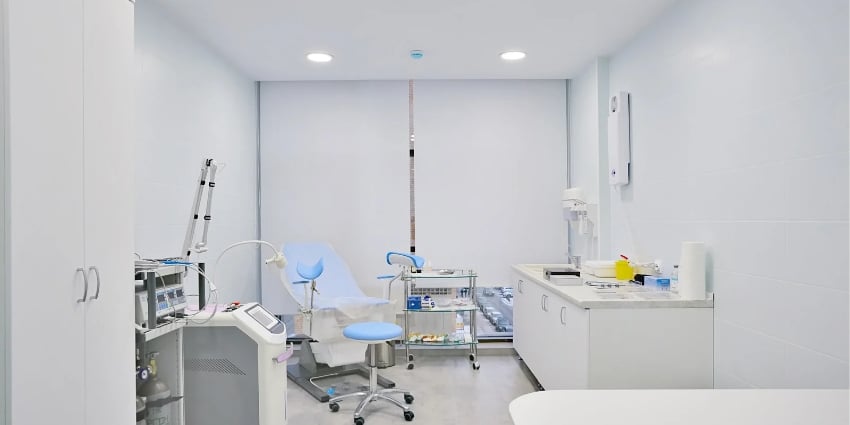Ensuring a clean and hygienic environment in a medical office is not just about aesthetics; it’s about maintaining the health and safety of both patients and staff. With the increased focus on hygiene in healthcare settings, having a structured cleaning protocol is crucial. This comprehensive guide will explore the cleaning tasks that should be performed daily, weekly, and monthly to maintain a safe and compliant medical office.
Contents
Why Medical Office Cleaning Requires a Higher Standard
Medical offices are unique environments where cleanliness directly impacts patient care outcomes. Unlike regular office spaces, medical facilities must adhere to stringent hygiene standards due to the nature of services provided. The presence of pathogens and the vulnerability of patients necessitate rigorous cleaning protocols to prevent infections and cross-contamination.
Regulatory Compliance
Several guidelines and regulations govern the cleanliness of medical facilities:
- OSHA (Occupational Safety and Health Administration): Emphasizes the need for proper hygiene to protect workers from exposure to infectious agents.
- CDC (Centers for Disease Control and Prevention): Provides detailed infection control guidelines to prevent the spread of healthcare-associated infections.
- EPA (Environmental Protection Agency): Offers guidance on the use of disinfectants effective against pathogens commonly found in healthcare settings.
Adhering to these standards not only ensures compliance but also enhances the reputation of the medical practice by prioritizing patient safety and staff well-being.
Daily Cleaning Tasks
Daily cleaning tasks are essential for maintaining a baseline level of cleanliness and hygiene in a medical office. These tasks focus on high-touch surfaces and areas that are frequently used, ensuring they remain sanitized and safe for everyone.
Daily Cleaning Protocols for Clinics
- Disinfecting Exam Rooms: After each patient visit, exam tables, chairs, and equipment should be wiped down with EPA-approved disinfectants. This prevents the spread of germs and maintains a sterile environment.
- Sanitizing Restrooms: Restrooms should be cleaned multiple times a day. This includes disinfecting toilets, sinks, and faucets, as well as replenishing supplies such as soap and paper towels.
- Wiping Down High-Touch Surfaces: Surfaces like doorknobs, light switches, and reception desks are frequently touched and can harbor germs. Regular disinfection of these surfaces is crucial.
- Emptying Trash Receptacles: Waste bins should be emptied daily to prevent the accumulation of potentially hazardous waste.
- Floor Cleaning: Sweeping and spot-cleaning floors, especially in high-traffic areas, ensures a clean and safe environment.
Implementing these daily cleaning protocols for clinics helps maintain a hygienic environment, reducing the risk of infection and enhancing patient confidence in the practice’s cleanliness.
Weekly Cleaning Tasks
While daily cleaning focuses on immediate cleanliness, weekly tasks delve deeper into maintaining a comprehensive level of sanitation throughout the facility.
Weekly Tasks for Medical Office Maintenance
- Mopping Floors: A thorough mopping of all floors, including waiting areas and hallways, helps remove dirt and grime that accumulate over time.
- Deep Cleaning Waiting Areas: Waiting areas should be vacuumed or mopped, and furniture should be cleaned and disinfected. This ensures a welcoming and safe environment for patients.
- Disinfecting Medical Equipment: Any reusable medical equipment should be thoroughly cleaned and sanitized to ensure it remains safe for future use.
- Cleaning Windows and Mirrors: Clear windows and mirrors contribute to a bright and inviting atmosphere, improving the overall patient experience.
- Restocking Supplies: Ensure that all cleaning supplies, hand sanitizers, and other essentials are fully stocked for the coming week.
By adhering to these weekly tasks, medical offices can maintain a high standard of hygiene, ensuring that all areas are sanitary and conducive to patient care.
Monthly Cleaning Tasks
Monthly cleaning tasks focus on areas that require less frequent attention but are crucial for maintaining the overall cleanliness and safety of a medical office.
Monthly Healthcare Facility Sanitation Checklist
- Air Vent Cleaning: Dust and debris can accumulate in air vents, affecting air quality. Monthly cleaning ensures a healthy environment by improving ventilation.
- Behind-Appliance Dusting: Dusting behind appliances like refrigerators and medical equipment prevents dust build-up that can contribute to respiratory issues.
- Deep Carpet/Floor Care: Carpets should be deep cleaned to remove embedded dirt and allergens, while hard floors may need waxing or buffing to maintain their condition.
- Light Fixture Cleaning: Regular dusting and cleaning of light fixtures enhance both aesthetics and lighting efficiency in the office.
- Emergency Kit Inspection: Monthly checks ensure that all emergency supplies are in place and not expired, adding to the safety measures of the facility.
Keeping up with these monthly tasks ensures a comprehensive approach to cleanliness, addressing areas that are not part of daily or weekly routines but are equally important for a safe medical environment.
Conclusion
The importance of a structured cleaning routine in medical offices cannot be overstated. Consistent cleaning not only ensures compliance with health and safety regulations but also plays a pivotal role in protecting patient safety, staff health, and the reputation of the practice. By implementing a detailed medical office cleaning checklist that includes daily, weekly, and monthly tasks, healthcare facilities can maintain an environment that prioritizes hygiene and safety.
Are you ready to elevate your medical office’s cleaning standards? Consider establishing a structured cleaning plan or hiring professional healthcare cleaning services to ensure your facility meets the highest hygiene standards. Consistent, compliant cleaning is not just a necessity—it’s a commitment to excellence in patient care and staff safety.


